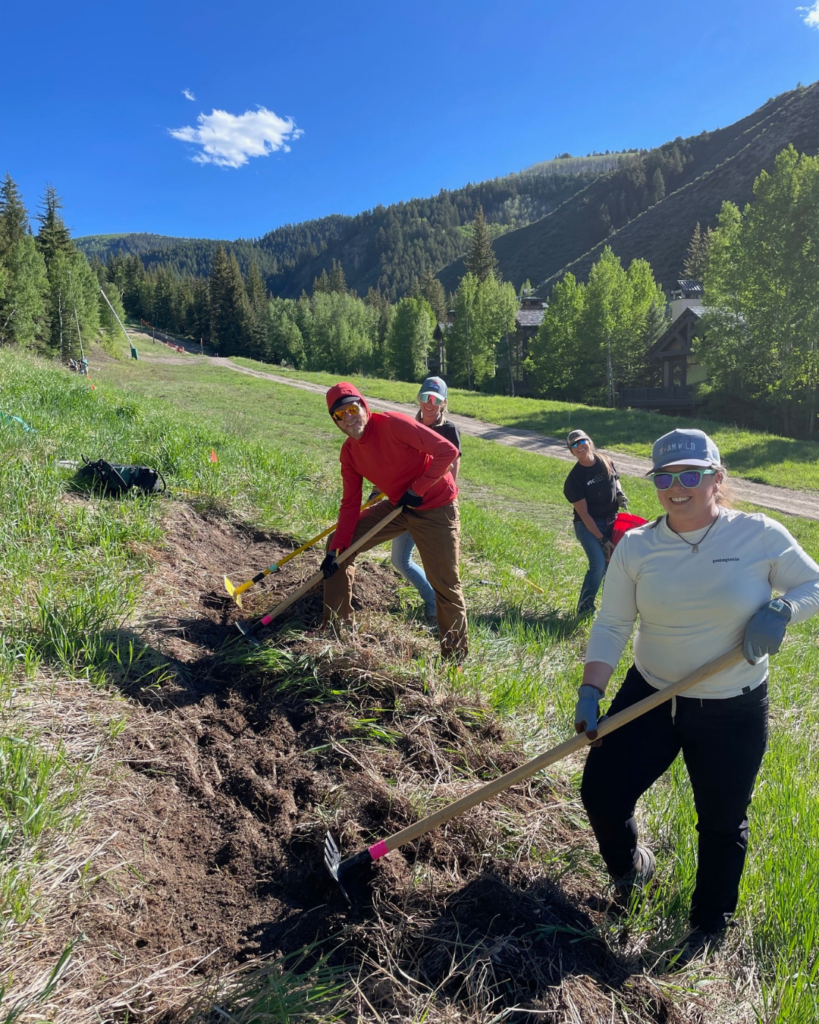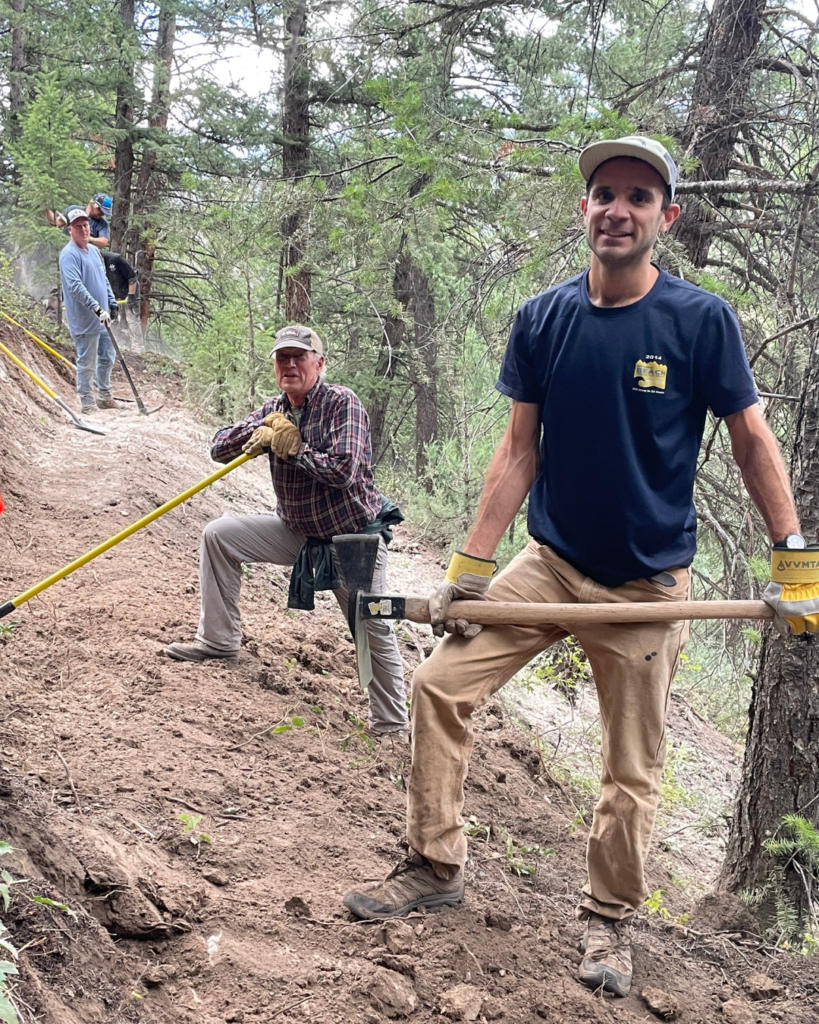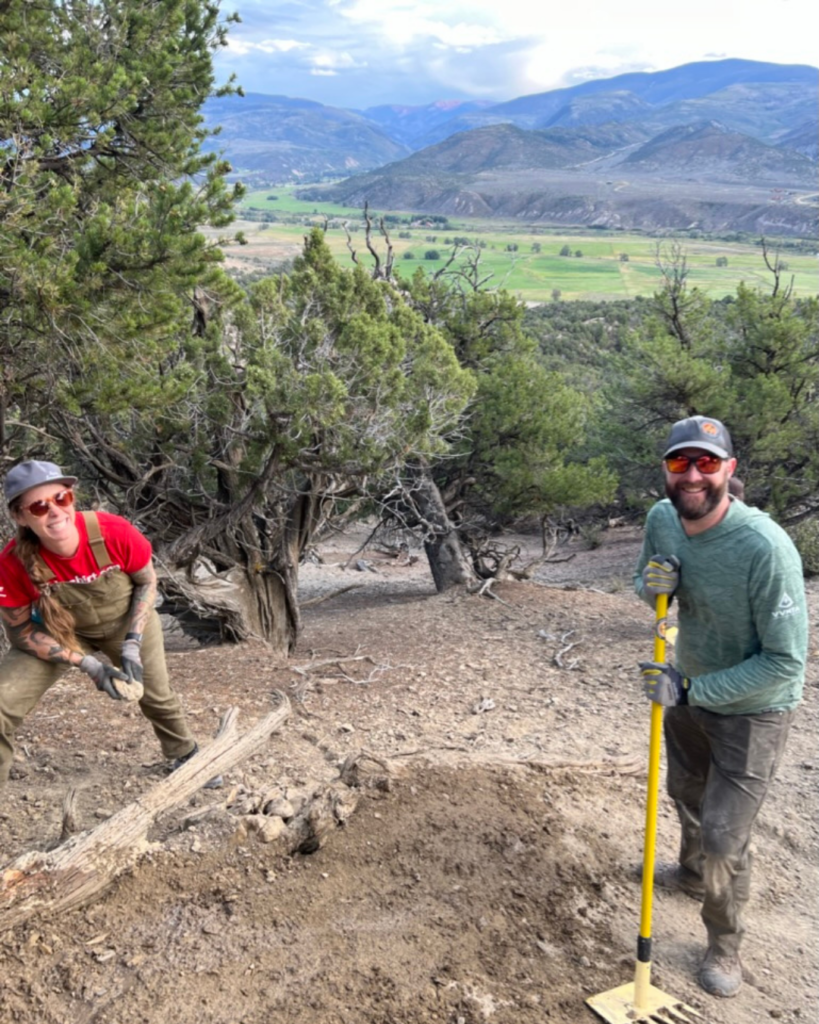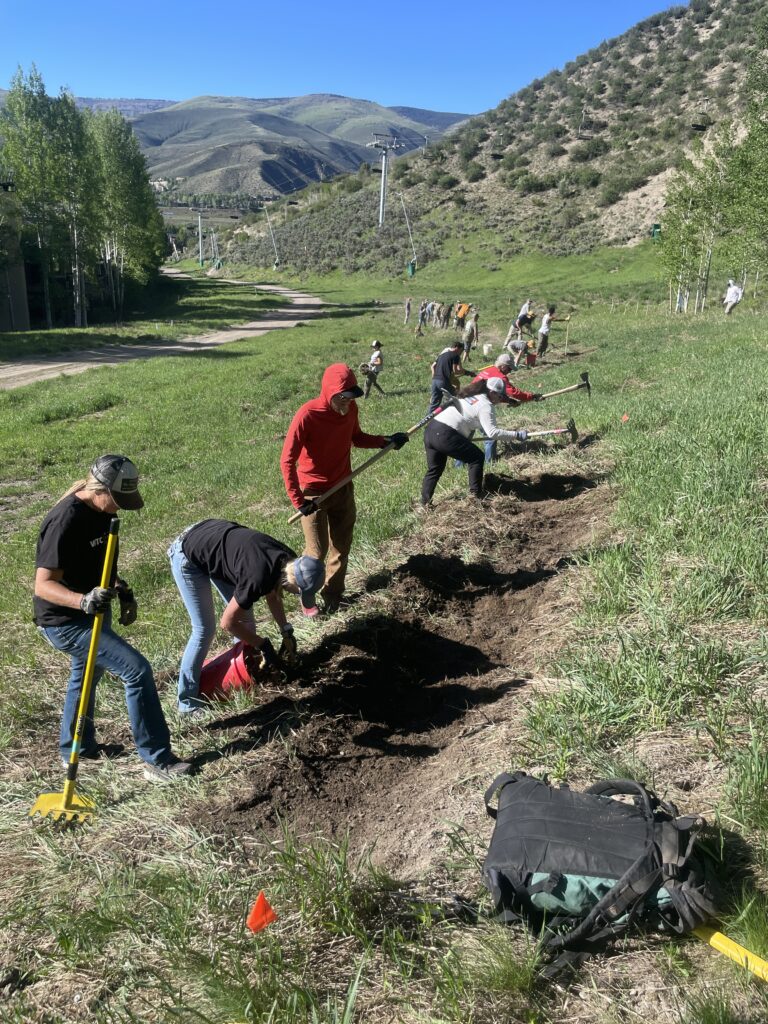From Navigating Red Tape to Digging in the Dirt – our network of trails requires meticulous planning and maintenance. Building a trail doesn’t happen overnight; in fact, it takes an immense number of hours and resources, coupled with the collaborative efforts of numerous stakeholders. Our job is to make sure and new trail aligns with our collective environmental and community values.
Trails aren’t built just to satisfy the desire of one person or group. There must be a community need for the trail to satisfy a specific use, form a new connection, or minimize impact elsewhere. To create a new trail, we collaborate with land management agencies, such as the US Forest Service, BLM, private landowners, homeowners’ associations, and municipalities. This can require years of research, paperwork, negotiations, and execution. VVMTA facilitates the process and ensures the work is done right the first time – no corners are cut when it comes to building trails that endure.
In 2024, we have accomplished three significant trail initiatives:
Apache Reroute to Keep Access Open During Construction
EagleVail Trail Extension
Eagle Area Trails Plan
Did you know that installing one new mile of plain vanilla flat trail with the support of a trail builder costs an average of $35K? We have brought all three of these projects to our community through your support driving significant value and improvements for your trail experience.
Our Advocacy Efforts are Working with Three Significant Trail Projects Completed in 2024



Apache Trail
- Construction was going to close access for the summer of 2024
- Working with Arrowhead HOA and Beaver Creek we found a solution to continue access with a reroute
- Over 50 volunteers showed up to provide over 160 hours of digging and building to complete the trail
- Trail completed and access open
EagleVail Trail Extension
- .75 mile of the total 1.64 mile trail is complete as of this year
- 150 volunteers showed up to provide over 300 hours of building
- Over 3 years of advocacy in partnership with the EagleVail Metro Distric, US Forest Service, Town of Avon, and Frontgate Avon to get land easements, approvals and funding
Eagle Area Trails 2024
- 5.12 miles of trail built or rerouted in partnership with Hardscrabble Trails Coalition
- Significant improvements to signage and trail routes with two trail hubs
- Over 4 years of advocacy in partnership with the Town of Eagle, Bureau of Land Management
- 11 miles of new trail yet to come
Bridging Community Desire with Future Trail Planning
Does this sound familiar? You have the perfect idea for a trail – why has no one built this epic route? It looks simple enough, right? Not so fast.
The starting line for a proposed new trail has nothing to do with excavators or pickaxes. Instead, it’s a mountain of research. The people needed for this fact-finding expedition aren’t nameless, faceless desk dwellers – they are your neighbors and local business partners and the hikers, bikers, or runners you see on your favorite trails. And before these players consider an additional trail, they make sure the current ones are being used and maintained, along with seasonal closures being communicated and respected.
Our view on the number of trails isn’t always ‘the more the merrier,’ though that is our view on getting people outside and enjoying the outdoor opportunities in our own backyard. Determining the right number of trails is like making a gear list for that multi-day hike you’ve always wanted to complete: a give and take of needs vs. wants.
Our trail system aims for ample outdoor access for the community on thoughtfully planned routes that meet community needs, but without excess. Your overnight backpack only holds so much gear from that list you made, and if you don’t respect its limits, you’ll blow the seams.
Likewise, each trail is part of a network that guides outdoor enthusiasts to be in the right place at the right time. Without the boundaries these trails provide, uneducated recreators may go wherever, whenever and destroy the figurative backpack. From our trails perspective, this inevitably leads to greater negative impacts on land, wildlife, and the entire trail experience.
That said, numerous partners in Eagle County — experts in their fields — play a role in carefully determining use of existing trails and the need for new ones. As our county population continues to grow, so does recreation and the community’s desire for new trails and improved outdoor opportunities.
We hear you! Know that we’re carefully considering new routes with a mix of advocacy and collaboration while not overstuffing the backpack. If a new trail is needed, we’ll plan and build it using sustainable development and proactive, forward-thinking concepts to provide the best experience for all.


